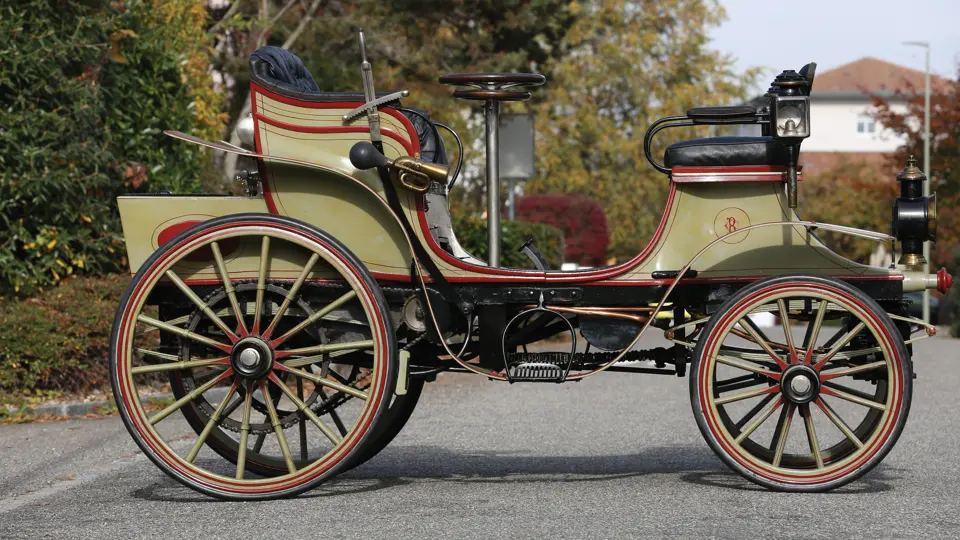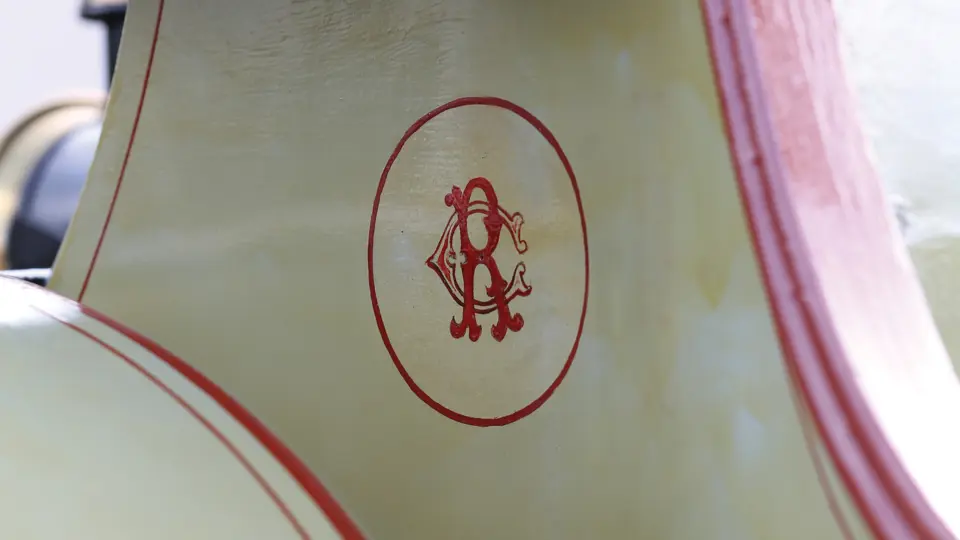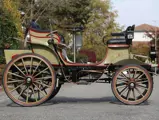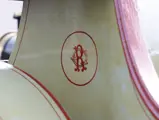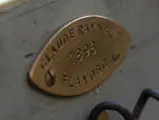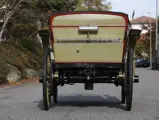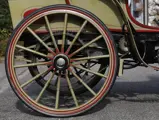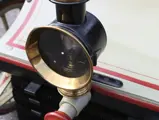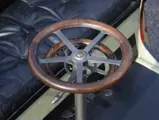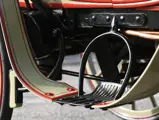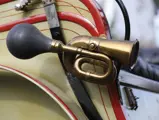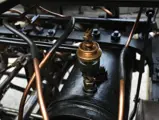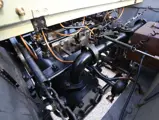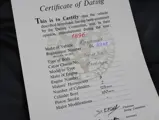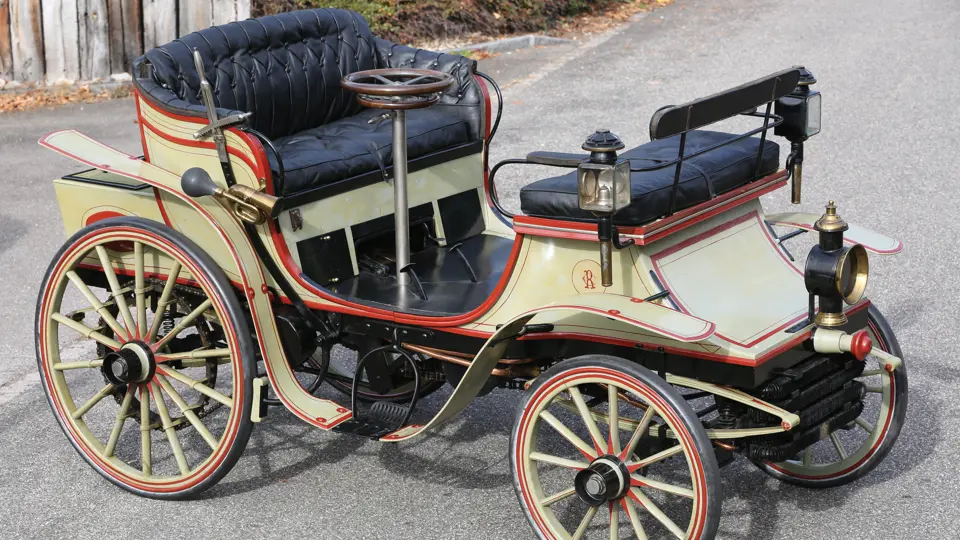
1896 Raynaud Vis-à-Vis Prototype
{{lr.item.text}}
€134,400 EUR | Sold
{{bidding.lot.reserveStatusFormatted}}
- Offered from a private Swiss collection
- Believed to be a prototype built by industrialist Claude Raynaud
- VCC-dated; London-to-Brighton eligible
- Provient d'une collection privée suisse
- Serait un prototype fabriqué par l'industriel Claude Raynaud
- Daté par le Veteran Car Club, éligible au Londres-Brighton
3,802 cc two-cylinder engine, solid front axle with full-elliptical leaf springs, solid rear axle with full-elliptical leaf springs and double chain drive, and two-wheel block brakes. Wheelbase: 1,950 mm
Moteur bicylindre 3 802 cm3, essieu avant rigide avec ressorts elliptiques à lames, essieu arrière rigide avec ressorts elliptiques à lames, transmission par deux chaînes, freins à sabot sur deux roues. Empattement 1 950 mm.
Unfortunately, history has not given prominence the automotive exploits of Claude Raynaud of Flayosc, a town in the Var Department of France. His name turns up with regard to a proposal for a hydroelectric facility there in 1903, though oddly not in conjunction with automobiles or in any known histories written of the French motor industry. This is surprising because, considering the date certified by the Veteran Car Club of Great Britain, it would make this unique vis-à-vis a very advanced type of motor car. Gear transmissions were hardly heard of in 1896, and the same was true for wheel steering. In fact, this car has two wheels on the steering column, the lower one for selecting gears. The French manufacturer Audibert et Lavirotte would introduce such a feature about two years later.
According to the consignor, this car was discovered by Jacques Vincent in Southern France in 1975. It is original aside from a repaint in its original colour and has new solid rubber tyres, as well as the original hubcaps, engraved ‘Raynaud-Flayosc’, which indicate the industrialist’s connection to the transportation industry. In addition, the car is dated by the Veteran Car Club, with a certificate issued in 1977, making it eligible for the famous London-to-Brighton Run.
This is a charming and advanced Veteran automobile that may well be the only one of its kind.
Malheureusement, l'histoire n'a guère retenu les exploits automobiles de Claude Raynaud, de Flayosc, petite commune du Var. Son nom est associé à une proposition concernant une centrale hydroélectrique dans la région, en 1903, mais il n'est pas lié à l'automobile et n'apparaît pas dans les ouvrages ou écrits relatifs à l'industrie automobile en France. C'est surprenant car, compte tenu de la date certifiée par le Veteran Car Club of Great Britain, le présent vis-à-vis apparaît comme très avancé pour son époque. Les pignons de transmission étaient encore absents en 1896, et l'on peut en dire autant de la direction commandée par un volant. En fait, la colonne de direction de cette voiture comporte deux volants, le plus bas étant destiné à la sélection des vitesses. Le constructeur Audibert et Lavirotte adoptera un tel dispositif environ deux ans plus tard.
Selon le propriétaire, cette voiture a été découverte en 1975 par Jacques Vincent dans le sud de la France. Elle est en état d'origine, sauf une peinture refaite dans sa teinté d'époque. Elle est équipée de pneus pleins neufs ainsi que de bouchons de moyeux d'origine, marqués "Raynaud-Flayosc", ce qui souligne la relation existant entre l'industriel et l'automobile. Par ailleurs, la voiture est datée par le Veteran Car Club, par le biais d'un certificat délivré en 1977, ce qui la rend éligible au célèbre rallye Londres-Brighton.
Il s'agit d'un ancêtre charmant et techniquement avancé, qui est probablement unique en son genre.
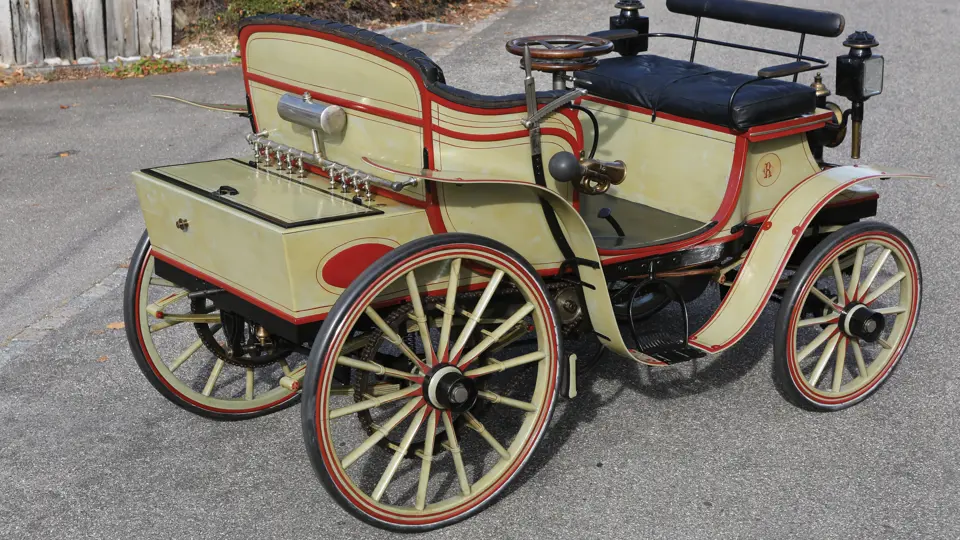





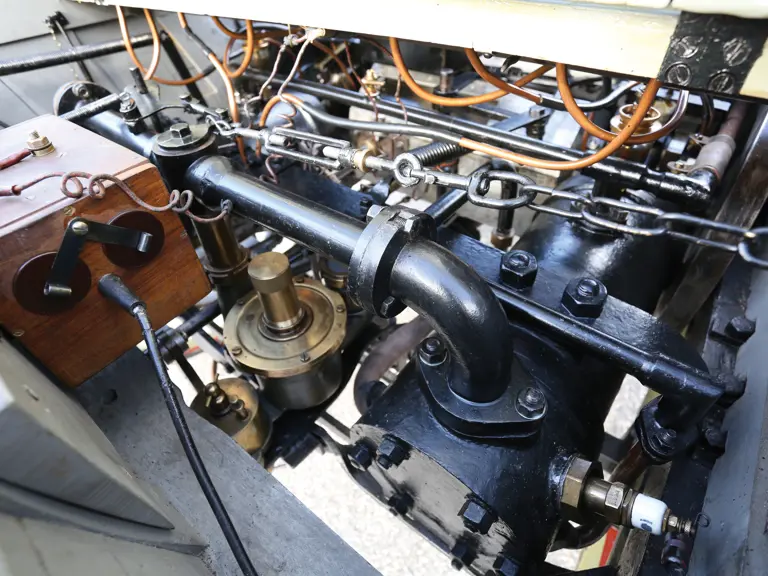


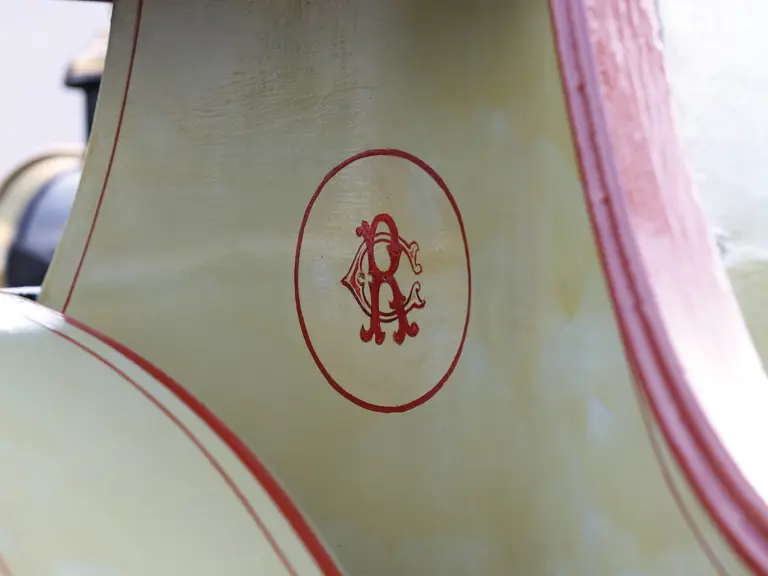
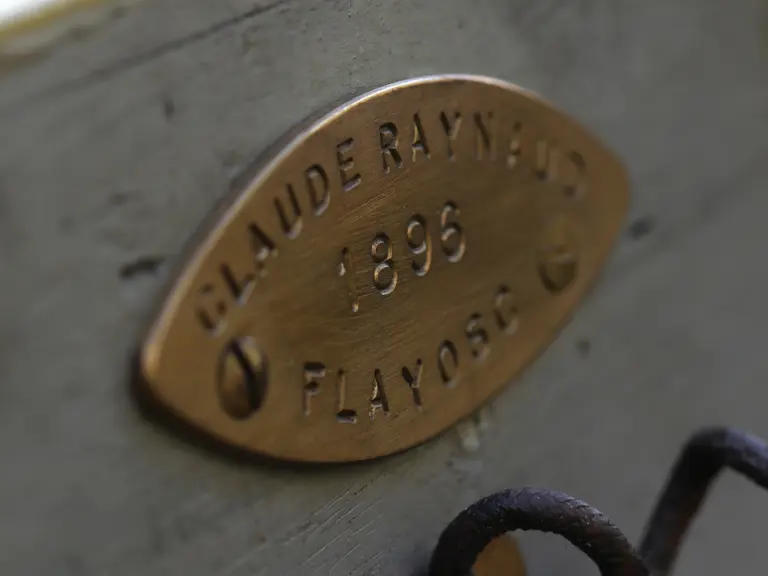

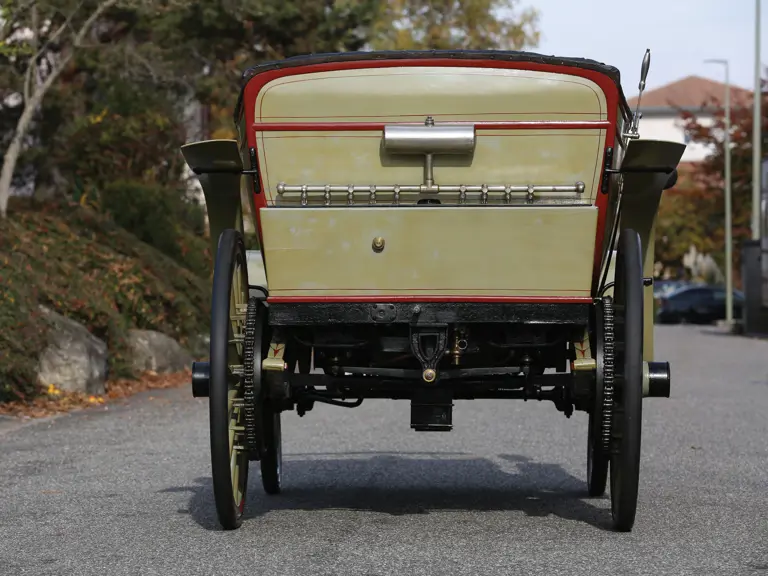
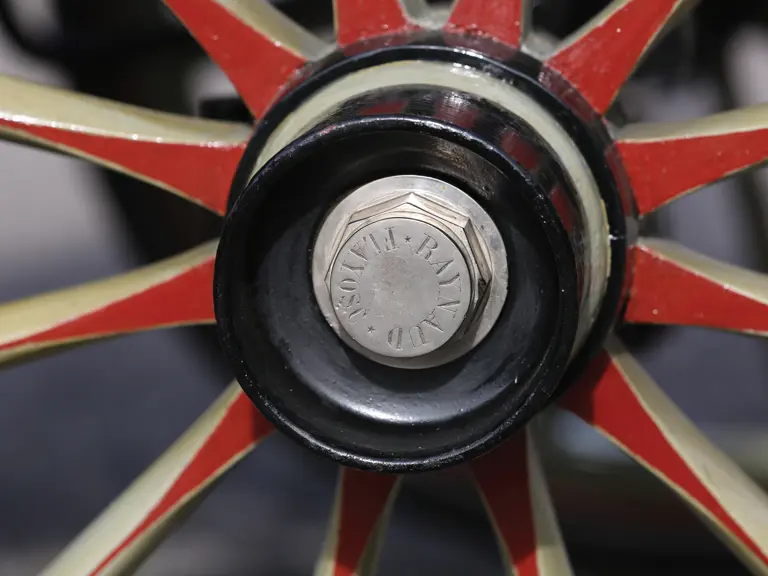
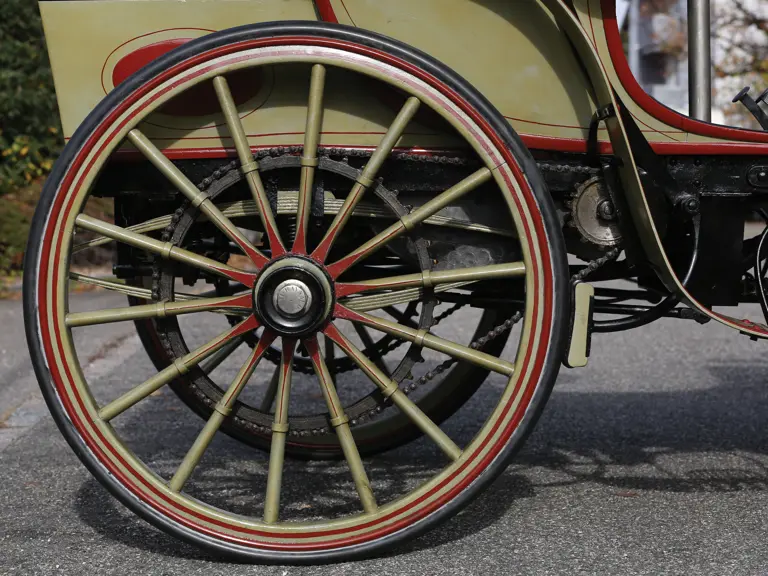
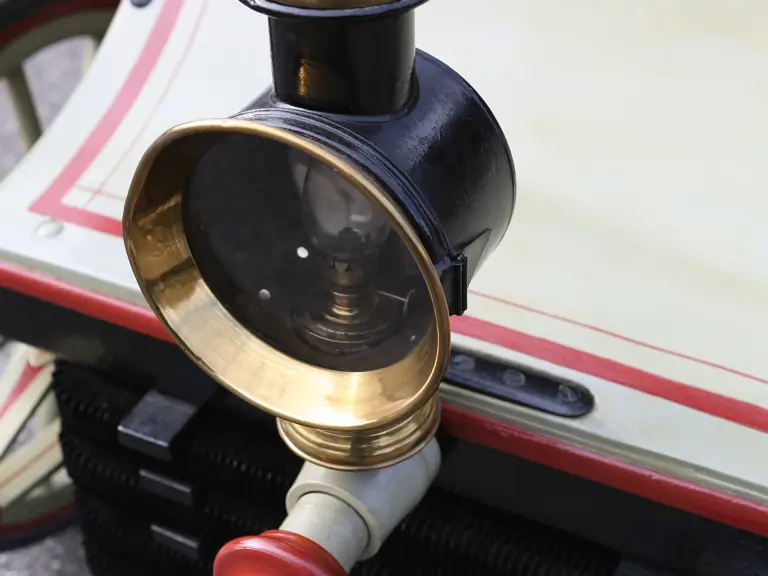

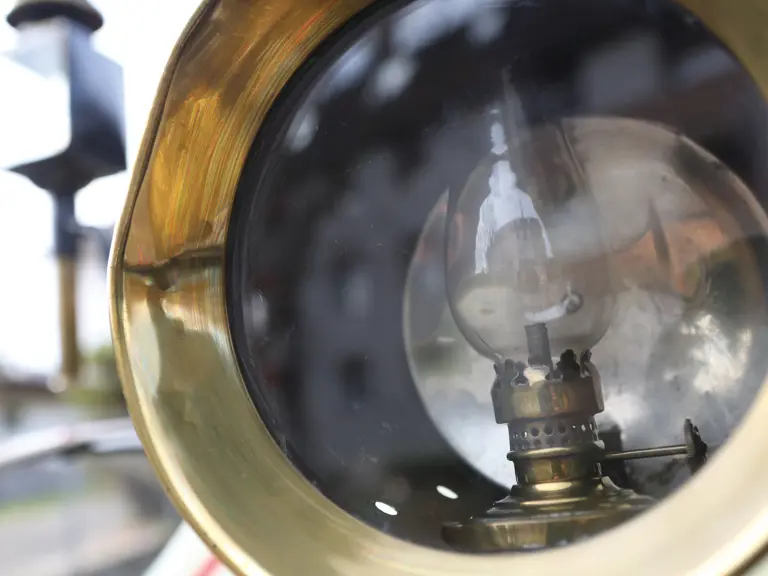



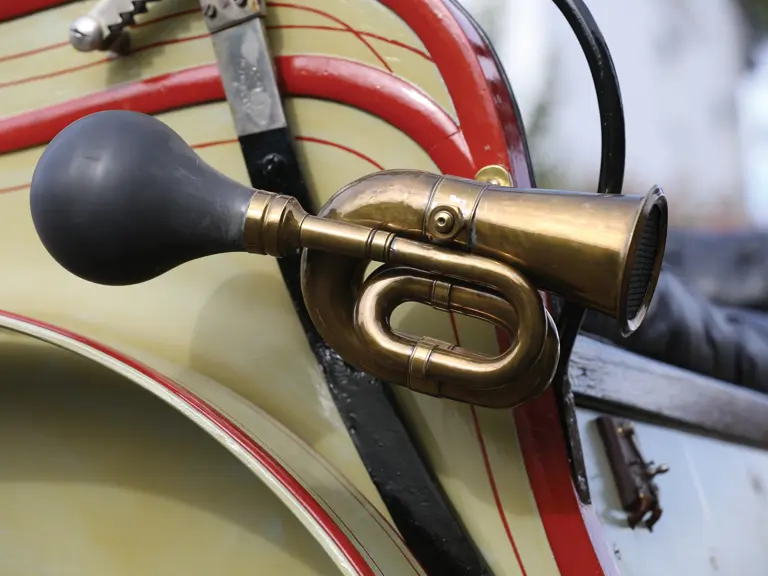
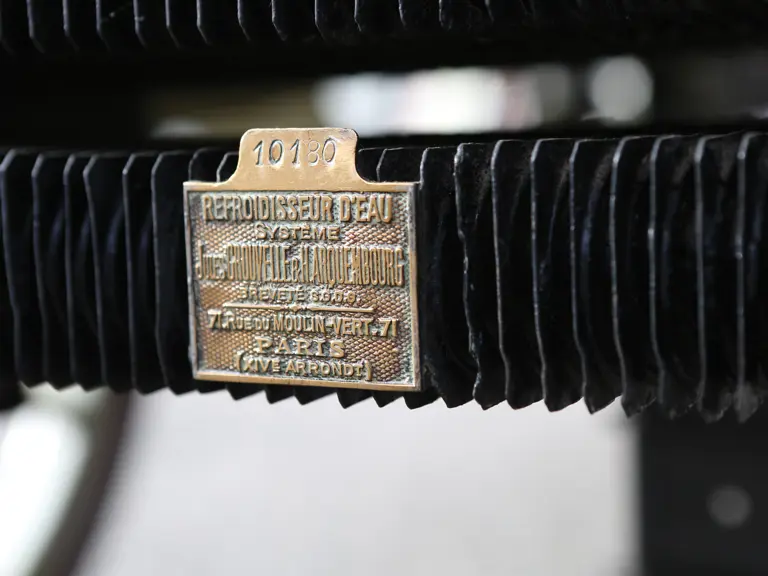
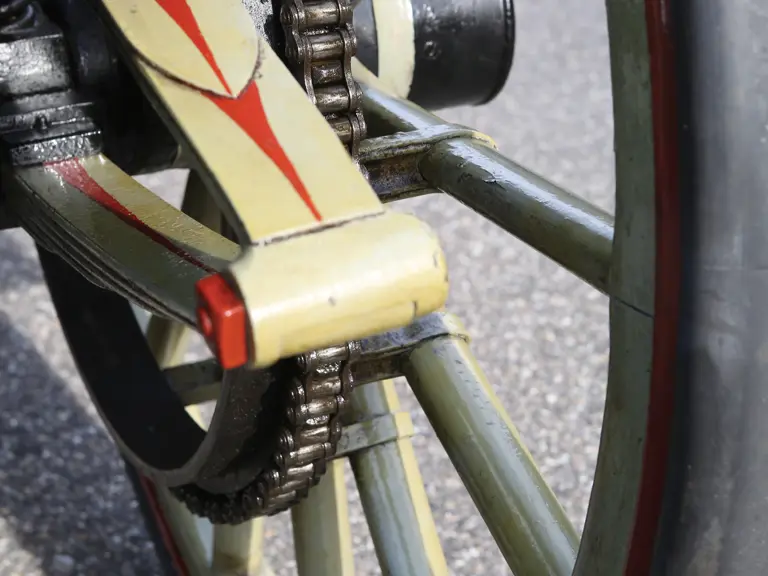

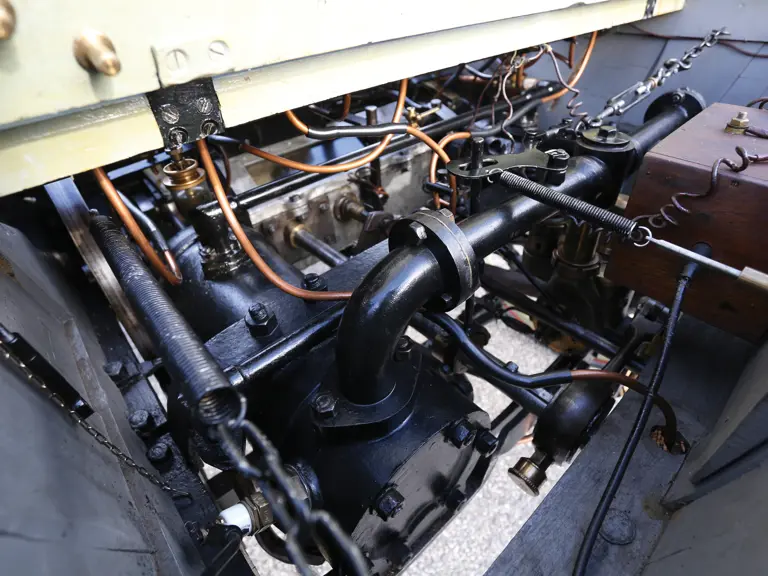
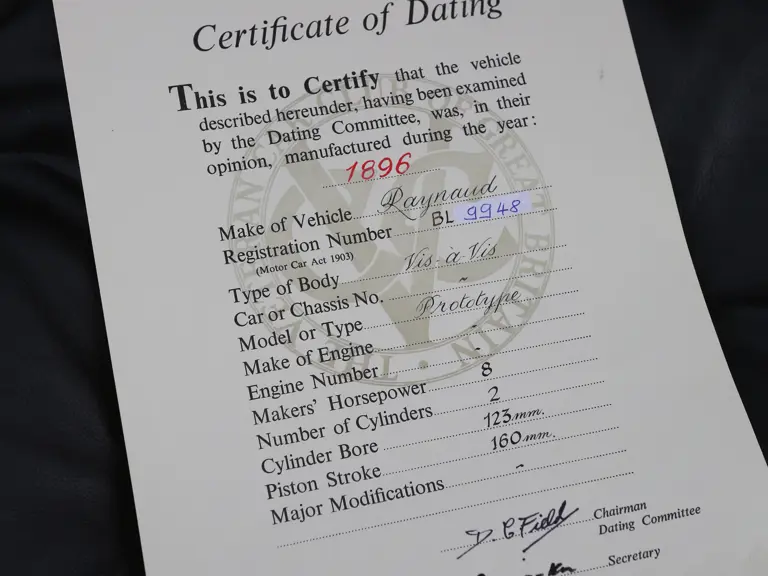
 | Paris, France
| Paris, France
